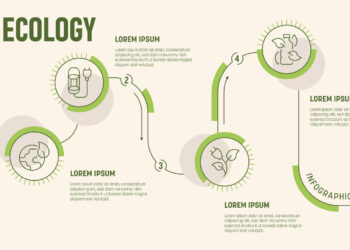
In a recent report cleverly titled, “The Dark Side of the Tune: The Hidden Energy Cost Of Digital Music Consumption,” an online music site in the UK is cautioning that while we might think that digital music — which operates without trucks, discs, and packaging — might be more environmentally friendly, it has the potential to have an even larger carbon footprint than the old-school technologies it’s supplanting.
As the authors of the paper put it:
. . . do ever more complex cloud, mobile, and streaming services represent sustainable consumption models or do they present us with an environmentally unsustainable digital future?
The majority of the problem stems from projections of the energy expenditures that could be required to support a scenario in which cloud computing and wireless access predominates. This means more streaming of digital goods and the consequent increases in data center, bandwidth, and relay energy needs.
Last week’s introduction of the iPhone 5 underscored that streaming is becoming a major mode of data exchange. New photo streams, new ways to use Bluetooth, and better support of wireless syncing all point to a cordless future powered invisibly, but perhaps less efficiently.
Purveying digital music is more energy efficient at the outset than selling CD-based music, generating 86% less CO2 when it’s first transmitted. However, with streaming services growing in popularity, favorite tracks might be accessed and streamed hundreds of times over the years. Compression matters. Without compression, streaming 12 tracks 27 times would create as much energy burden as manufacturing a CD with 12 songs. Compression can extend this so that a listener would need to listen to 12 tracks 180 times to equal a CD’s energy burden, but over the years and with vast libraries of digital music streaming to millions of devices, that won’t be an uncommon event in the future.
There are problems with the analysis. For instance, a main comparison is the energy needed to manufacture and ship a CD vs. the energy to stream the same songs (compressed vs. uncompressed). What this approach leaves out is the energy needed to play the songs on the CD. This isn’t trivial. A CD player consumes about as much power when it’s running as a laptop computer. But the analysis leaves this out. There’s also no accounting for over-manufacturing of CDs — these are those the find themselves in the discount bins and rural gas stations. There is potentially less waste if digital music is only played on-demand.
Nevertheless, the main message — that sustained use of bandwidth has costs and creates pollution — isn’t lost.
It isn’t just music that’s streaming. VOIP phone systems, online gaming, video calls, and email all stream vast data sets, with email often reproducing itself in systems and on mobile devices at the same time.
MusicTank’s experts believe a grim future can be forestalled if energy needs are anticipated and new approaches developed to stunt their rapid increase. These strategies could include more local caching (something Spotify has already put in place), incentives to develop large-capacity storage drives (e.g., a 1 petabyte drive could hold all the world’s music and sell for $100 in the near future), and more stringent enforcement of anti-piracy and copyright laws.
Huh? Copyright has a place in limiting energy consumption? This could create some cognitive dissonance — companies should enforce copyright because it’s environmentally responsible?
How environmentally responsible? It turns out that unlicensed file sharing could be responsible for up to four times the combined electrical needs of all the households in the UK — or 1% of the world’s energy. A German study found that 70% of European data traffic was from unlicensed file sharing. This is even more compelling when you consider that:
. . . the 33 percent temporary reduction in web traffic seen by Sweden after it introduced anti-piracy laws in 2010 was equivalent to the electricity usage of 2,030 UK households.
This is worth contemplating for a moment longer. Essentially, pirates are causing more damage than just infringing on intellectual property — they are causing environmental damage and adding to our overall energy burden through their piracy. In fact, energy costs may be increasing partially because of the need to create headroom for pirates.
Even without piracy, are subscription barriers environmentally friendly? After all, if unqualified people (or simply people too cheap to pay for information) are downloading content they won’t use or just because it’s “free,” what environmental burden are things like open access and free articles online creating? “Free” might actually have costs beyond lost revenues. “Free” might be creating unwarranted energy use and pollution.
Energy costs continue to be a focus of digital dissemination, especially as online becomes the predominant mode of information exchange. As you may recall, a small study we published here found that even running an archive in maintenance mode could cost tens of thousands of dollars per year in energy costs. This didn’t compare the carbon footprints of print to online, but it’s clear that digital publishing has an appreciable carbon footprint as well as significant energy costs.
The Internet was supposed to be magical — a virtual realm, an effortless superhighway of information, elevating us from the mundane into an electronic otherness. But it’s not magical. It’s a set of technologies that require resources, including extensive infrastructure composed of expensive and dangerous elements and metals; plenty of human support and intervention to keep it running; and lots of energy to light it.
Print is a set of technologies. Online is a set of technologies. The digital world is not clean or cheap. It is expensive, as we’ve seen, and it is also dirty.
I’m beginning to see the point of steampunk.
Discussion
6 Thoughts on "Online Isn't Cheap, We Know — But An Environmentally Problematic Energy Hog?!"
Steampunk, it should be pointed out, is what happens when Goth kids discover the color brown.
Not sure I see OA as having an apocalyptic effect on the environment though. You’d have to subtract out all the energy put into running and maintaining subscription systems, then add back in the systems for APC payments, then figure out the actual change in readership that would occur. Given that most journals make abstract views freely available, is there really that much more energy consumed in viewing the full text of an article?
Good point. I suppose that lots of “unqualified people” or “people too cheap to pay for information” may use, for example, Google. As each Google search creates anywhere between 2g to 7g of CO2 then maybe Google should stick it’s search functionality behind a paywall…
Evidence is growing that online has costs that might only be solved by metering — just turning on the spigot and letting it run creates problems. Whether Google creates a paywall or, as some online providers have signaled (to their ultimate dismay), you might have to start paying for bandwidth on a metered basis. This is already happening in some settings, where higher bandwidth connections are more expensive.
Love the line about steampunk. That will have me laughing a little all day. Thanks.
I don’t think the effect of “free” information is apocalyptic, but in aggregate, it’s not nothing, and as we continue to move toward a situation that enshrines free content, we should be cognizant that there are benefits to non-free content, including less wasted energy and a moderated carbon footprint for online publishing and streaming. Copyright and paywalls limit unchallenged use of resources. The findings in here were pretty interesting to contemplate.
The functional analogy for bandwidth for years has been, “It’s just a modern utility.” No utility I know of is sold without metering. If the providers can’t meter effectively, then perhaps the content providers should be metering bandwidth, as Phil suggests in his comment. Their efforts to do this so far have met with widespread derision, but it may ultimately be the best course. Right now, Apple and others are building major businesses off unmetered bandwidth.
An economist would argue that a small online surcharge attached to free would be enough to stop wasteful downloading for the purpose of creating personal redundant archives. Charging for more bandwidth or more data throughput would also have the same result, but done at a macro level. Essentially, there needs to be some feedback to the user that limits the potential of unlimited use. Bandwidth should be thought of as a utility–like residential water–that has real costs to those who provide and deliver the bits.



